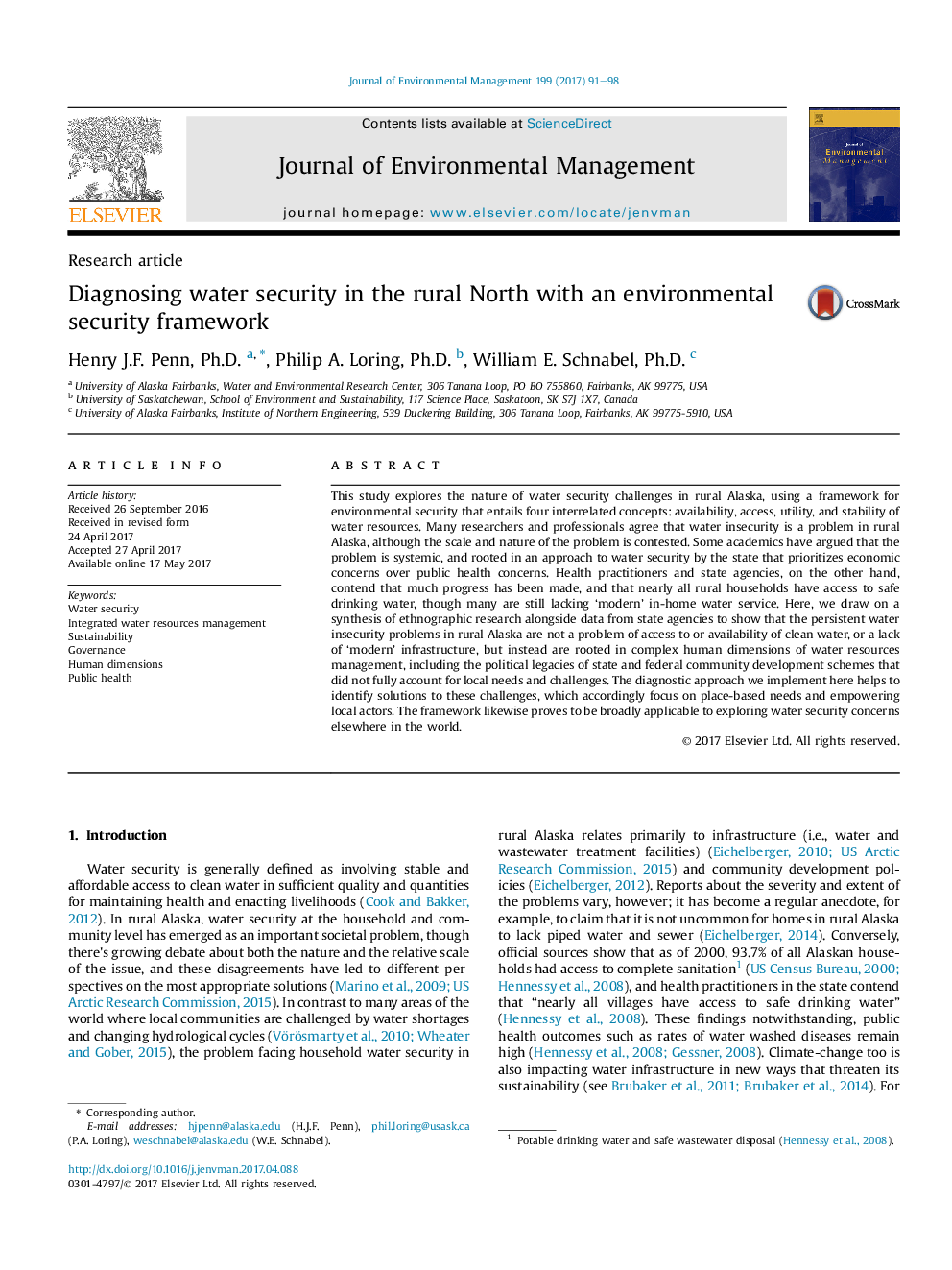| کد مقاله | کد نشریه | سال انتشار | مقاله انگلیسی | نسخه تمام متن |
|---|---|---|---|---|
| 5116611 | 1485218 | 2017 | 8 صفحه PDF | دانلود رایگان |
• An environmental security framework was used to diagnose community water security.
• The challenge is not availability, but sustainably providing water to households.
• The best gains to water security can be achieved by improving local Utilities.
• New systems may be more sustainable if the community Utility is stable first.
• Focusing on the Water Utility to attend to community water insecurity is proposed.
This study explores the nature of water security challenges in rural Alaska, using a framework for environmental security that entails four interrelated concepts: availability, access, utility, and stability of water resources. Many researchers and professionals agree that water insecurity is a problem in rural Alaska, although the scale and nature of the problem is contested. Some academics have argued that the problem is systemic, and rooted in an approach to water security by the state that prioritizes economic concerns over public health concerns. Health practitioners and state agencies, on the other hand, contend that much progress has been made, and that nearly all rural households have access to safe drinking water, though many are still lacking ‘modern’ in-home water service. Here, we draw on a synthesis of ethnographic research alongside data from state agencies to show that the persistent water insecurity problems in rural Alaska are not a problem of access to or availability of clean water, or a lack of ‘modern’ infrastructure, but instead are rooted in complex human dimensions of water resources management, including the political legacies of state and federal community development schemes that did not fully account for local needs and challenges. The diagnostic approach we implement here helps to identify solutions to these challenges, which accordingly focus on place-based needs and empowering local actors. The framework likewise proves to be broadly applicable to exploring water security concerns elsewhere in the world.
Figure optionsDownload high-quality image (281 K)Download as PowerPoint slide
Journal: Journal of Environmental Management - Volume 199, 1 September 2017, Pages 91–98
